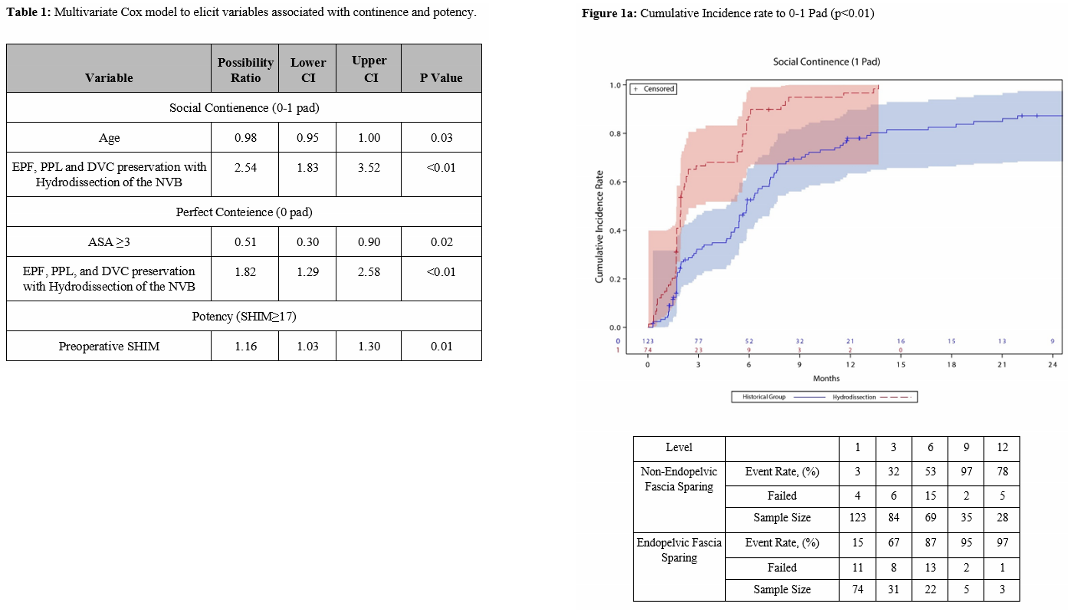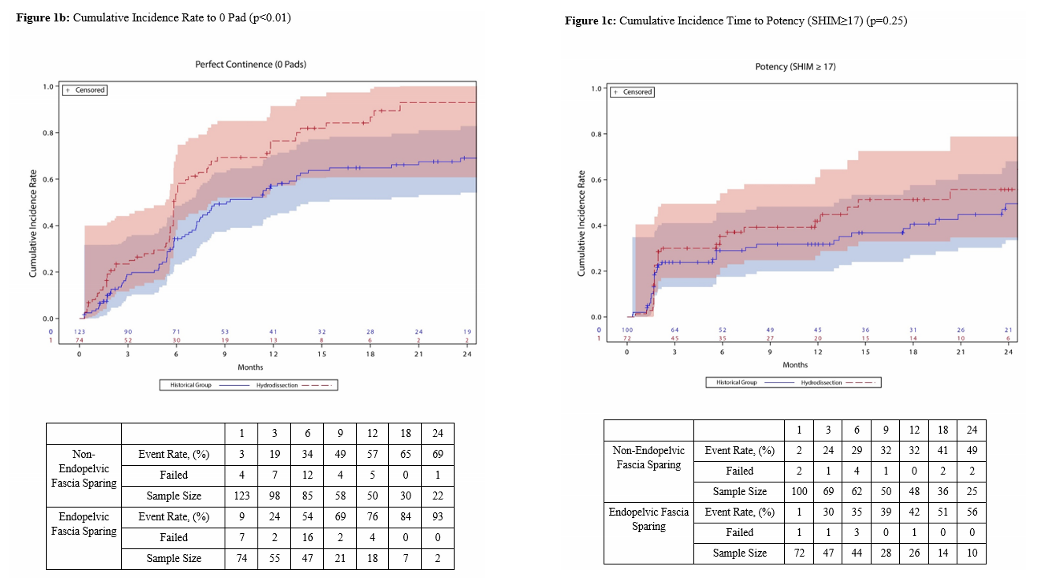Back
Poster, Podium & Video Sessions
Moderated Poster
MP15: Prostate Cancer: Localized: Surgical Therapy I
MP15-14: Preservation of Endopelvic Fascia, Puboprostatic Ligaments, Dorsal Venous Complex and Hydrodissection of the Neurovascular Bundles Improve Rates and Time to Continence after Robot-Assisted Radical Prostatectomy: A Propensity-Score Matched Analysis
Friday, May 13, 2022
2:45 PM – 4:00 PM
Location: Room 222
Ahmed S. Elsayed, Yousuf Ramahi*, Ayat A. Shah, Hannah B. Ely, Zhe Jing, Holly Houenstein, Julian Joseph, Sharifeh Almasaid, Gaybrielle James, Buffalo, NY, James O. Peabody, Detroit, MI, Ahmed A. Hussein, Khurshid A. Guru, Buffalo, NY

Yousuf Omar Ramahi, BS
Roswell Park Comprehensive Cancer Center
Poster Presenter(s)
Introduction: We sought to report the oncologic and functional outcomes of endopelvic fascia (EPF), puboprostatic ligament (PPL), and dorsal venous complex (DVC) preservation with hydrodissection of the neurovascular bundles (NVB) during robot-assisted radical prostatectomy (RARP).
Methods: A retrospective review of our prostate cancer database was performed. Patients who underwent either bilateral or unilateral nerve sparing-RARP were identified. Propensity score matching was performed between new surgical technique (Group 1) and a historical group (Group 2). Data was reviewed for perioperative, oncologic and functional outcomes. Kaplan Meier curves were used to depict biochemical recurrence-free survival (BRFS). Cumulative incidence curves were used to depict perfect continence (0 pads), social continence (0-1 pad) and potency (SHIM =17). Multivariate analyses (MVA) were used to depict variables associated with continence and potency.
Results: 202 patients were included in the study (76 in Group 1 and 126 in Group 2) with a median follow up of 17 months. Kaplan Meier curves showed similar BRFS (p=0.98). Group 1 showed higher perfect continence rates at 1 months (9% vs 3%), 3 months (24% vs 19%), and 6 months (54% vs 34%) compared to Group 2. Group 1 showed higher social continence rates at 1 month (15% vs 3%), 3 months (67% vs 32%), and 6 months (87% vs 53%) compared to Group 2 (Figure 1a-c). MVA showed that Group 1 was associated with perfect (HR 1.82, 95%CI 1.29–2.58, p<0.01) and social continence (HR 2.54, 95%CI 1.83 – 3.52, p<0.01), but not potency (Table 1).
Conclusions: EPF, PPL, and DVC preservation with hydrodissection of the NVB offered similar oncological outcomes, but earlier and improved urinary continence rates compared to standard dissection.
Source of Funding: None


Methods: A retrospective review of our prostate cancer database was performed. Patients who underwent either bilateral or unilateral nerve sparing-RARP were identified. Propensity score matching was performed between new surgical technique (Group 1) and a historical group (Group 2). Data was reviewed for perioperative, oncologic and functional outcomes. Kaplan Meier curves were used to depict biochemical recurrence-free survival (BRFS). Cumulative incidence curves were used to depict perfect continence (0 pads), social continence (0-1 pad) and potency (SHIM =17). Multivariate analyses (MVA) were used to depict variables associated with continence and potency.
Results: 202 patients were included in the study (76 in Group 1 and 126 in Group 2) with a median follow up of 17 months. Kaplan Meier curves showed similar BRFS (p=0.98). Group 1 showed higher perfect continence rates at 1 months (9% vs 3%), 3 months (24% vs 19%), and 6 months (54% vs 34%) compared to Group 2. Group 1 showed higher social continence rates at 1 month (15% vs 3%), 3 months (67% vs 32%), and 6 months (87% vs 53%) compared to Group 2 (Figure 1a-c). MVA showed that Group 1 was associated with perfect (HR 1.82, 95%CI 1.29–2.58, p<0.01) and social continence (HR 2.54, 95%CI 1.83 – 3.52, p<0.01), but not potency (Table 1).
Conclusions: EPF, PPL, and DVC preservation with hydrodissection of the NVB offered similar oncological outcomes, but earlier and improved urinary continence rates compared to standard dissection.
Source of Funding: None



.jpg)
.jpg)